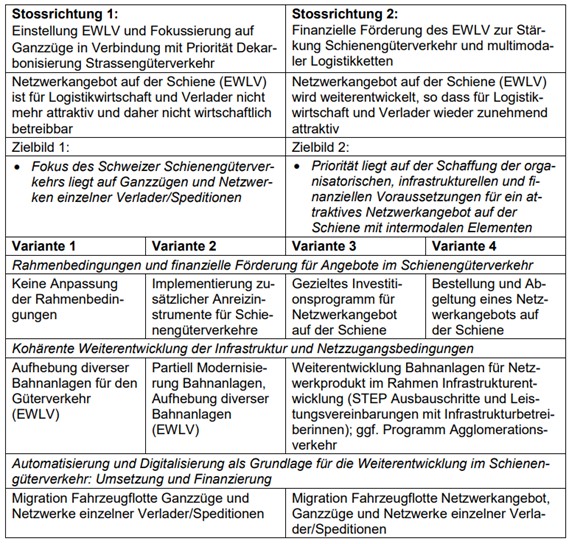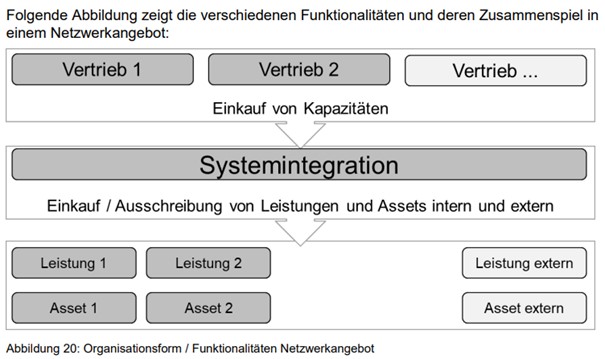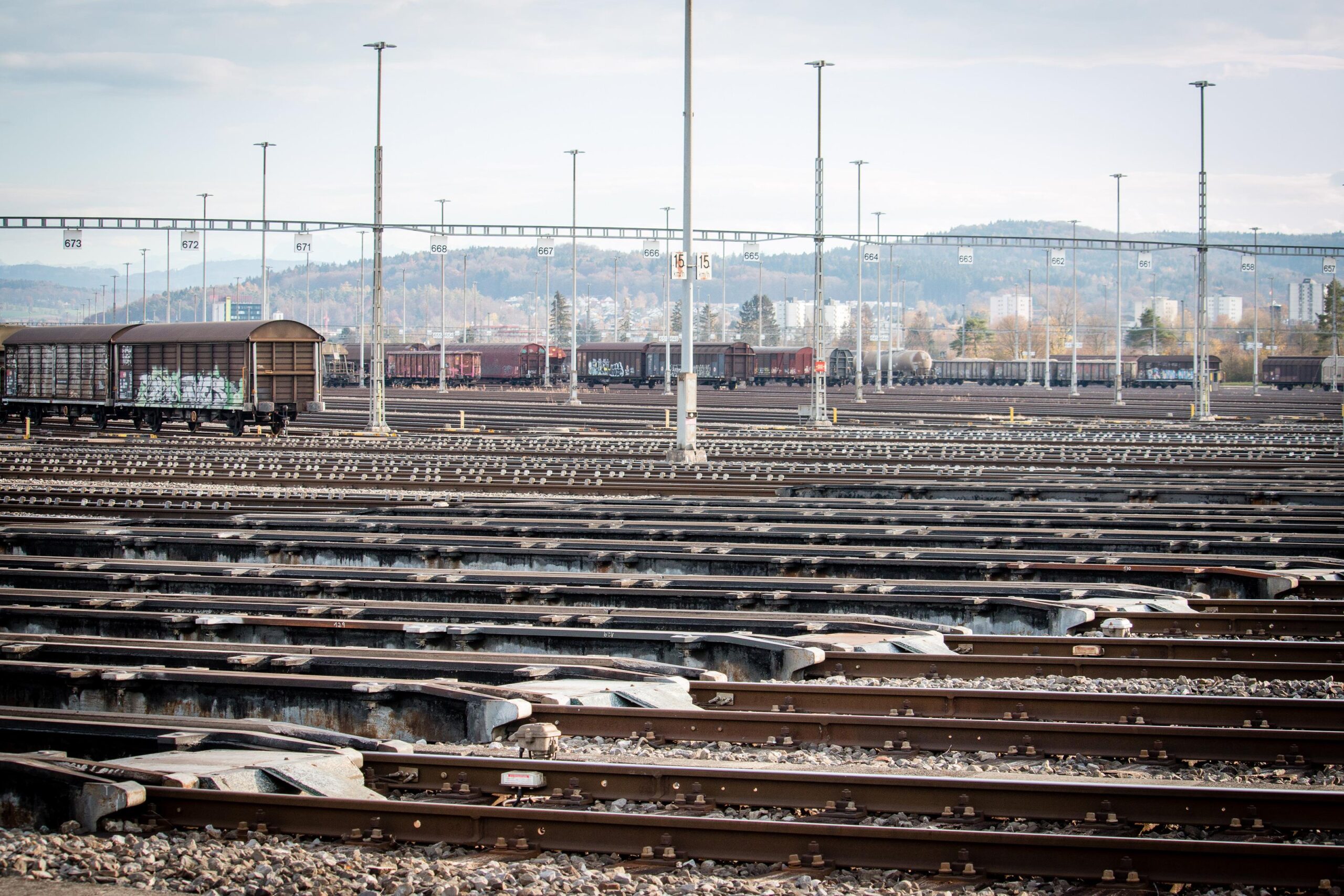Shaping rail freight transport for the future
The Federal Council’s report Bericht «Future orientation of rail freight transport in the area»[1] of March 2022 provides a welcome opportunity to rethink the Swiss rail freight transport system with its intermodal competition and cross-system processes as a whole. A holistic new conception starts not only with the (start-up) financing of the EMLV or the DAC, but with all processes, incentive instruments, market mechanisms and interfaces of multimodal freight logistics in Switzerland.
The goal must be a self-sustaining, market-based rail freight transport system that includes all freight railways without discrimination on the basis of intramodal competition and supports shippers as a reliable partner. In this context, any financing based on the proven model in transit traffic must primarily benefit the customers of all freight railways and offer performance-based, competition-neutral incentives without any discrimination. Only in this way and only with combined forces can innovations and investments by the private sector in rail freight transport develop. And only in this way can rail freight transport in the countryside be made fit for the future.
Federal Council considers long-term financial support
According to the report, the Federal Council wants to maintain single wagonload traffic (SCC) in the future and does not rule out long-term financial support. According to the definition of the Federal Office of Transport (FOT), single wagonload traffic comprises the transport of groups of wagons in unaccompanied combined transport (UCT) and conventional rail freight wagons bundled together for the main run.
The Boards of Directors of SBB AG and SBB Cargo AG assess in their Financial Report 2021[2] a subsidisation of their rail freight services as necessary and probable. The Federal Council and the federal companies are thus apparently in agreement that financial support for rail freight transport is necessary in the area. However, they base their assessment of volume and financial viability solely on information from SBB Cargo. The other freight railways, most of which are organised in the private sector, are not included in this assessment. In our view, a new perspective is urgently needed here.
Adopting a new perspective
SBB Cargo has been operating nationwide rail freight services as a monopoly since the 1999 Rail Reform I – with little success, as a review 25 years after the parliamentary decision shows. This must change: The freight railways active throughout Switzerland and their customers can join forces and, under the leadership of the Wagonload Transport Interest Group (IGWLV)[3], redesign rail freight transport in Switzerland.

Figure 1, page 51 in the report «Future orientation of rail freight transport in the area».
For the further development of rail freight transport in the area, the report presents two directions (Figure 1): one involves the discontinuation of EMLV, the other the financial promotion of EMLV. From the VAP’s point of view, this is too narrow a view. A change of perspective is necessary in two respects: First, actors need to redefine their understanding of their roles and rethink their processes. Secondly, a neutral view of the financial situation is needed. For neither the envisaged technical advances (keyword digital automatic coupling DAC) nor the purely internal view of SBB Cargo can bring about a reorganisation. This should also be the focus of the current discussion about the future. The organisational form shown in the report (Figure 2) represents a mental jumping-off point for working out further variants of directions.

Figure 2, page 50 in the report «Future orientation of rail freight transport in the area».
Fact-based decisions
In order to assess the financing requirements of regional rail freight transport, it is imperative to have an analysis of the economic viability carried out by external neutral experts. If surface rail freight is indeed unprofitable, a distinction must be made as to whether SBB Cargo’s monopoly position or the system itself is responsible. The neutral third party must also examine whether economic viability, as required by the Freight Transport Act (GüTG[4]), is currently being pursued at all. Only when a detailed analysis of the current situation is available can parliament decide on appropriate measures.
Limit funding
If financial support proves to be undoubtedly appropriate, it should be considered as temporary financing for a fundamental new concept – not as permanent subsidisation. Temporary start-up funding can support the development of a competitive rail freight transport system until its simultaneous digitalisation and automation and the commissioning of new network elements from the 2035 expansion stage have been completed. Permanent funding, on the other hand, would undermine the market-based incentives for competitiveness and self-sufficiency of rail freight transport and make further development of rail freight transport in Switzerland impossible.
[1] “Future orientation of surface rail freight traffic”, Federal Council report in response to KVF‑S postulate 21.3597 of 10 May 2021. In 1999, with Rail Reform I, Parliament transferred the monopoly for the operation of surface rail freight traffic to SBB Cargo AG. Its share of rail freight traffic in domestic, import and export traffic is around 60%. The remaining 40% is carried in block trains via sidings and terminals.
[2] «SBB Financial Report 2021», chapter «Bewertungsunsicherheiten rund um die Coronapandemie und um das Geschäftsfeld Cargo Schweiz», p. 84.
[3] The Wagonload Transport Interest Group (IGWLV) was founded in 2018. It represents the interests of VöV, SBB Cargo and VAP with the mandate to modernise rail freight transport in the area and make it more efficient, in accordance with Art. 3a of the Freight Transport Act. President: Frank Furrer, Secretary General VAP, Vice President: Désirée Baer, CEO SBB Cargo –> Reports on IG WLV
[4]«Bundesgesetz über den Gütertransport durch Bahn- und Schifffahrtsunternehmen (Gütertransportgesetz, GüTG)» Art. 2 Para. 2



